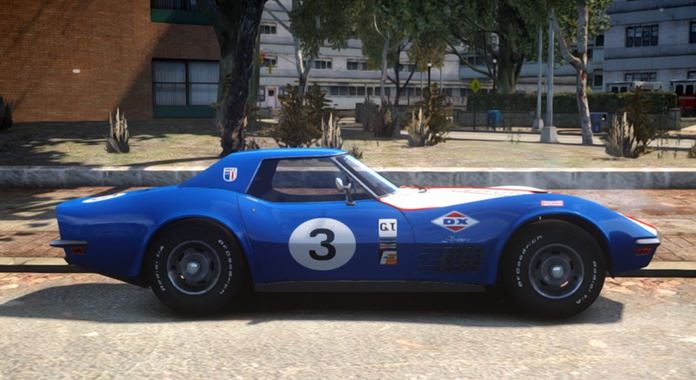
The only motor associated with the ZR1 Corvette option package when it debuted on the C3 Corvette in 1970 was the LT-1.
 While GM’s big block engines were churning out huge horsepower by 1970, it was the debut of a small block power plant that would capture the attention of Corvette enthusiasts looking for the pinnacle of street cred. Factory rated at 370 horsepower, the LT-1 was a 350-cube, high-revving small block screamer which boasted a forged steel crankshaft, four-bolt main block, solid lifters, a high-lift camshaft and other requisite go-fast goodies.
While GM’s big block engines were churning out huge horsepower by 1970, it was the debut of a small block power plant that would capture the attention of Corvette enthusiasts looking for the pinnacle of street cred. Factory rated at 370 horsepower, the LT-1 was a 350-cube, high-revving small block screamer which boasted a forged steel crankshaft, four-bolt main block, solid lifters, a high-lift camshaft and other requisite go-fast goodies.
Outfitted with 11:1 compression and a 780 CFM Holley four-barrel carburetor mounted atop a unique aluminum intake manifold, the LT-1 was scheduled to debut alongside the LS7 454, the latter of which would represent the ultimate in big block Chevy performance and therefore sit at the top of the Corvette performance list, but production issues would result in the LT-1 being the only engine for 1970.
Externally it’s almost impossible to tell a C3 ZR1 from a standard 1970 Stingray – this package was focused on performance without any consideration for aesthetic upgrades. GM’s expectation was that these cars would be put into competition use, so the ZR1 could not be ordered with creature comforts like power windows, power steering, air conditioning, and a radio, which is likely what kept most customers who planned to daily drive their Corvettes from opting for the package.
It would also be the sole engine choice for the new ZR1. Designed for road racers and road-going enthusiasts looking for uncompromising capability, the package included a host of road racing-spec equipment pulled from the L88 parts bin, including the M22 “Rock Crusher” close-ratio four-speed gearbox, the J56 heavy-duty brake package, the F41 suspension package and an uprated cooling system that consisted of a bigger aluminum radiator and an expansion tank. All very much racing oriented.
As with the L88 and other hardcore performance packages before it, the ZR1 would prove to be rarely chosen on the options sheet, with just 25 examples built in 1970 and even fewer over the next two years after. Still, it left an indelible mark on Corvette fanatics that wasn’t lost on the brass at General Motors.





